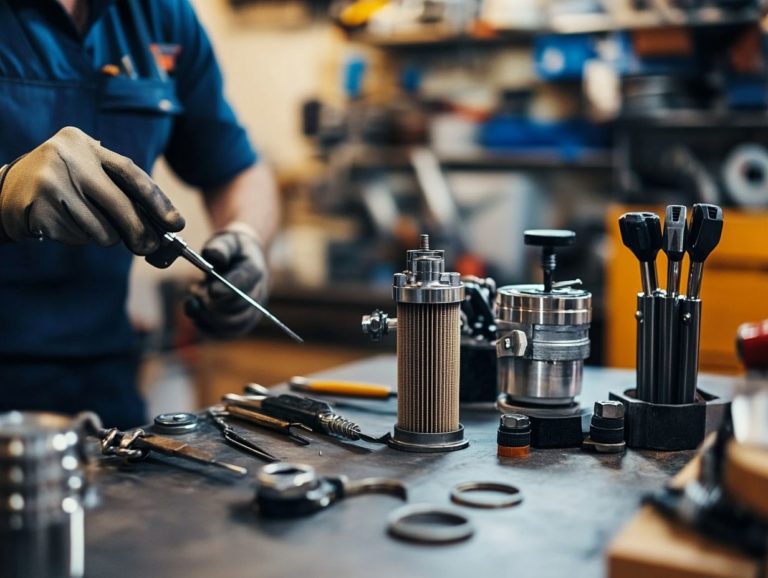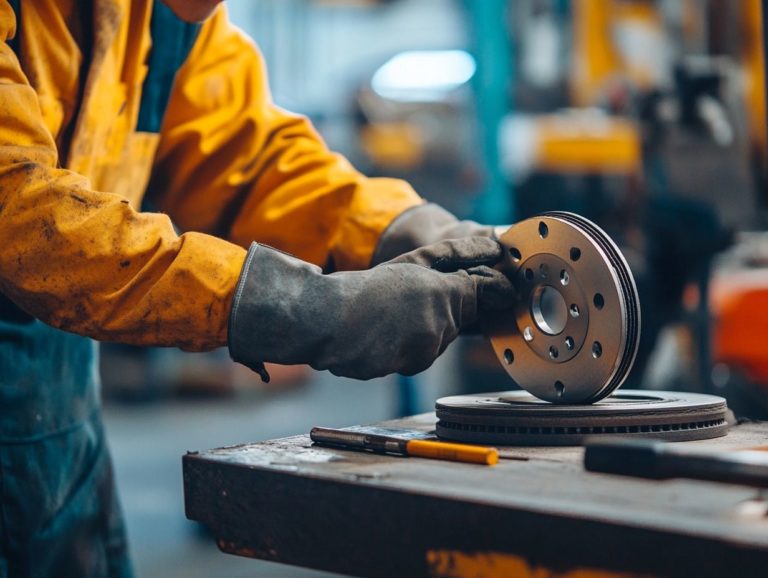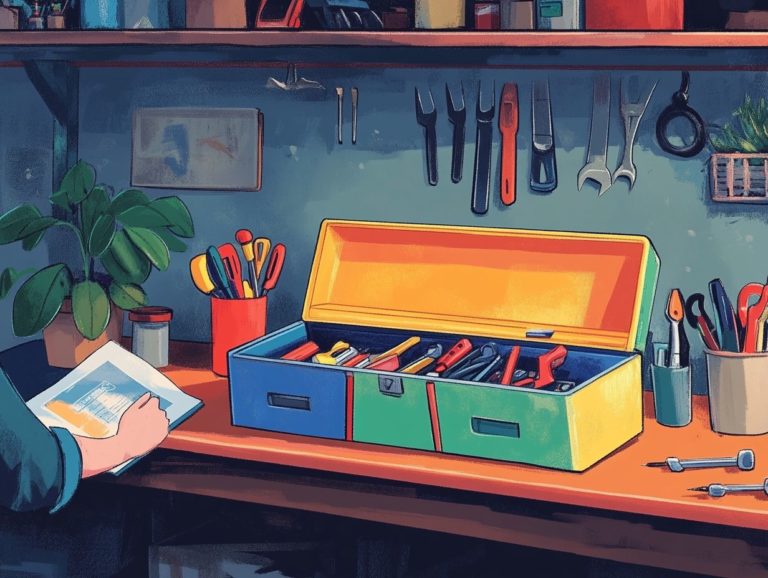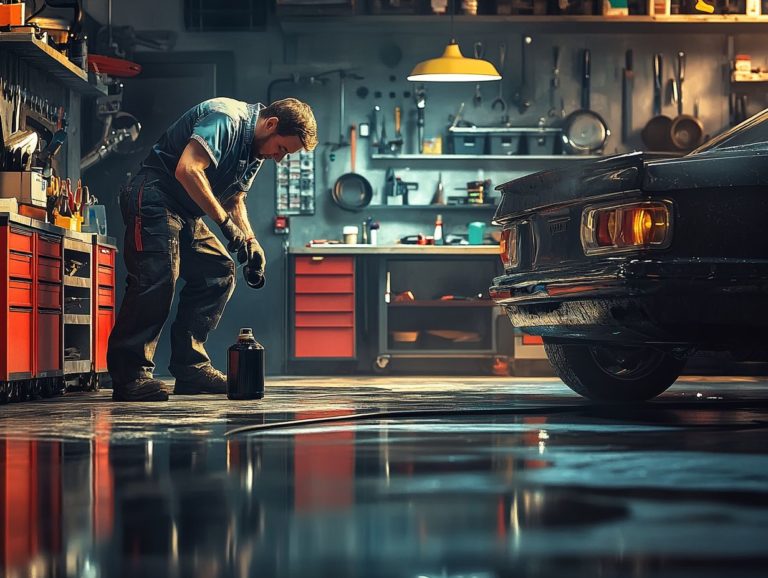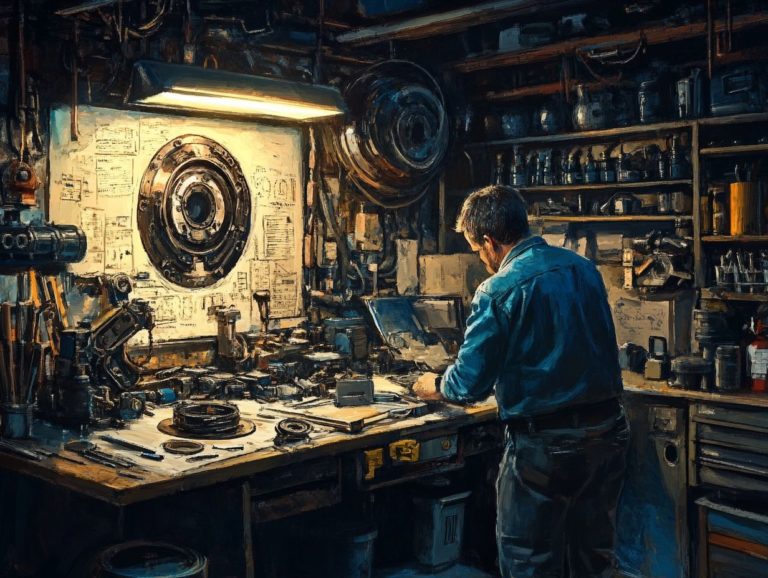Understanding Common Cooling System Repairs
Your vehicle’s cooling system is essential for maintaining an optimal engine temperature and preventing overheating. Like any mechanical system, it can face challenges that demand your attention.
This article delves into common cooling system problems, guiding you through identifying leaks in your radiator and recognizing the signs of a failing water pump or thermostat.
With detailed step-by-step repair guides, you’ll gain the confidence to address these issues and ensure your engine continues to run smoothly.
Contents
- Key Takeaways:
- Common Cooling System Issues
- Repairing a Leaky Radiator
- Replacing a Faulty Water Pump
- Fixing a Broken Thermostat
- Frequently Asked Questions
- What are some common causes of cooling system problems?
- How can I tell if my cooling system needs repairs?
- What are some ways to prevent cooling system issues?
- Can I repair a cooling system problem myself?
- How much does it typically cost to repair a cooling system problem?
- What happens if I ignore a cooling system problem?
Key Takeaways:
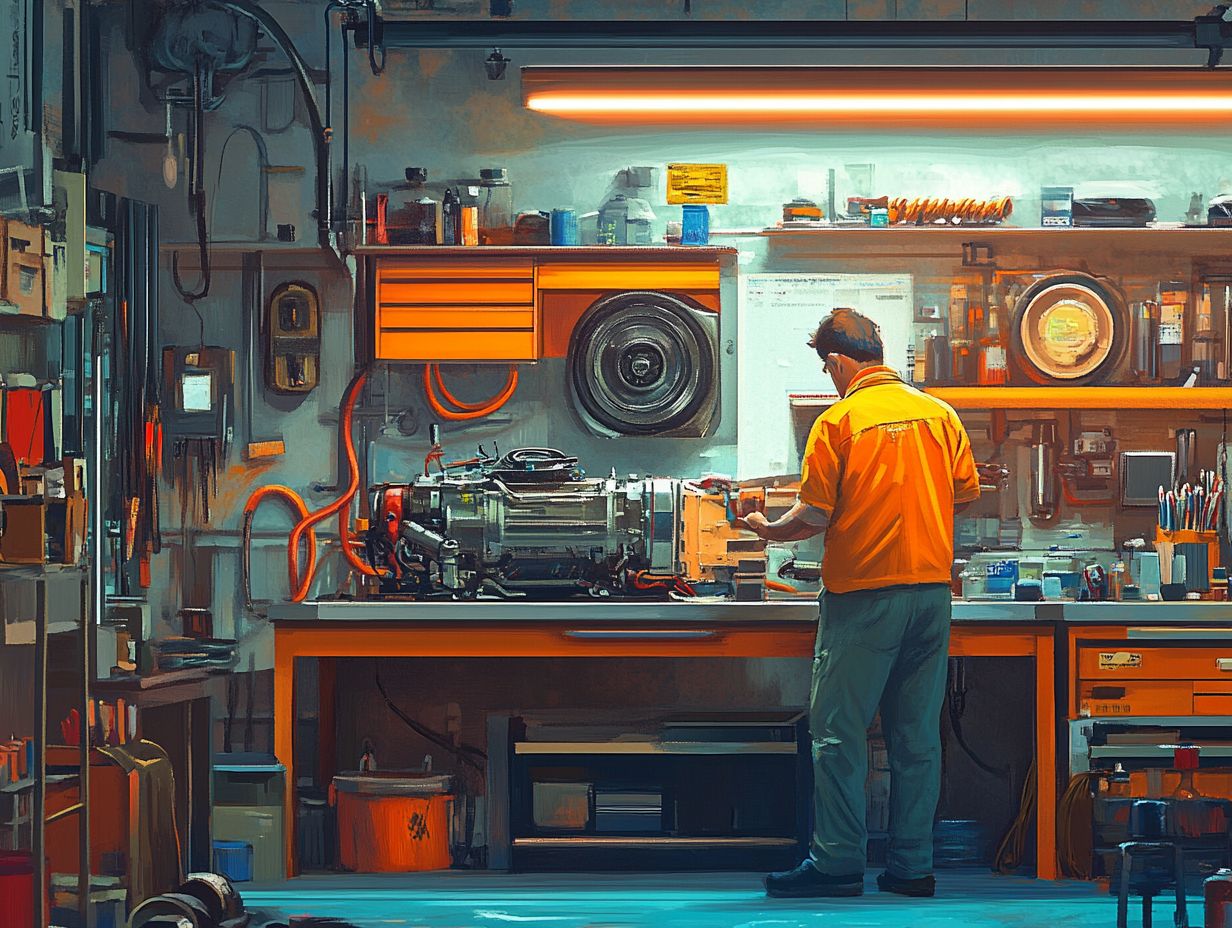
- Regular maintenance is key to avoiding costly cooling system repairs. Keep an eye out for any signs of leaks, faulty water pumps, and broken thermostats.
- Identifying the problem is the first step to fixing a cooling system issue. Pay attention to strange noises, overheating, and leaks to determine the root cause.
- Replacing a faulty water pump and fixing a broken thermostat are common cooling system repairs. Follow a step-by-step guide and pay attention to symptoms to ensure a successful repair.
What is a Cooling System?
A cooling system is a vital component in your vehicle, expertly regulating engine temperature to ensure optimal operation and performance.
This intricate system consists of several key components, each playing an essential role. The radiator efficiently dissipates heat, while the thermostat acts as a vigilant gatekeeper, controlling the flow of coolant, the liquid that helps control engine temperature, to maintain a steady temperature.
The water pump is equally crucial, facilitating the circulation of coolant to ensure it flows seamlessly through the engine and back to the radiator. Regularly checking coolant levels is imperative, as low coolant can lead to overheating.
Don t ignore maintenance overheating can lead to costly repairs! Neglecting maintenance can have severe consequences, such as engine damage.
Seeking professional inspection and repair can significantly extend your engine’s lifespan and enhance overall vehicle performance.
Common Cooling System Issues
Common cooling system issues can greatly affect your engine’s performance, often revealing themselves through symptoms that every discerning vehicle owner should recognize.
Issues like radiator leaks, thermostat failures, and water pump malfunctions can result in engine overheating and coolant leaks serious threats to your engine’s reliability.
To maintain optimal performance, it s essential to regularly monitor coolant levels. Thoroughly inspect the cooling system to avoid significant engine troubles down the road.
Identifying the Problem
Identifying cooling system problems starts with recognizing visible signs of radiator issues, monitoring engine temperature, and keeping an eye on the temperature gauge readings while you drive.
Look out for common indicators like fluctuating temperatures and visible coolant leaks; both should prompt you to seek immediate attention from a skilled mechanic for a proper diagnosis.
Using tests like pressure checks can be invaluable in pinpointing leaks and weaknesses within the cooling system.
A thorough visual inspection of the coolant reservoir can uncover issues like sediment buildup or discoloration, both of which signal potential system failures. Understanding these symptoms is crucial for you to intervene in a timely manner, as neglecting them can lead to more severe engine damage.
Adhering to regular maintenance schedules promotes optimal engine performance and extends the lifespan of your vehicle. By doing so, you can avoid costly repairs and ensure your safety on the road.
Repairing a Leaky Radiator
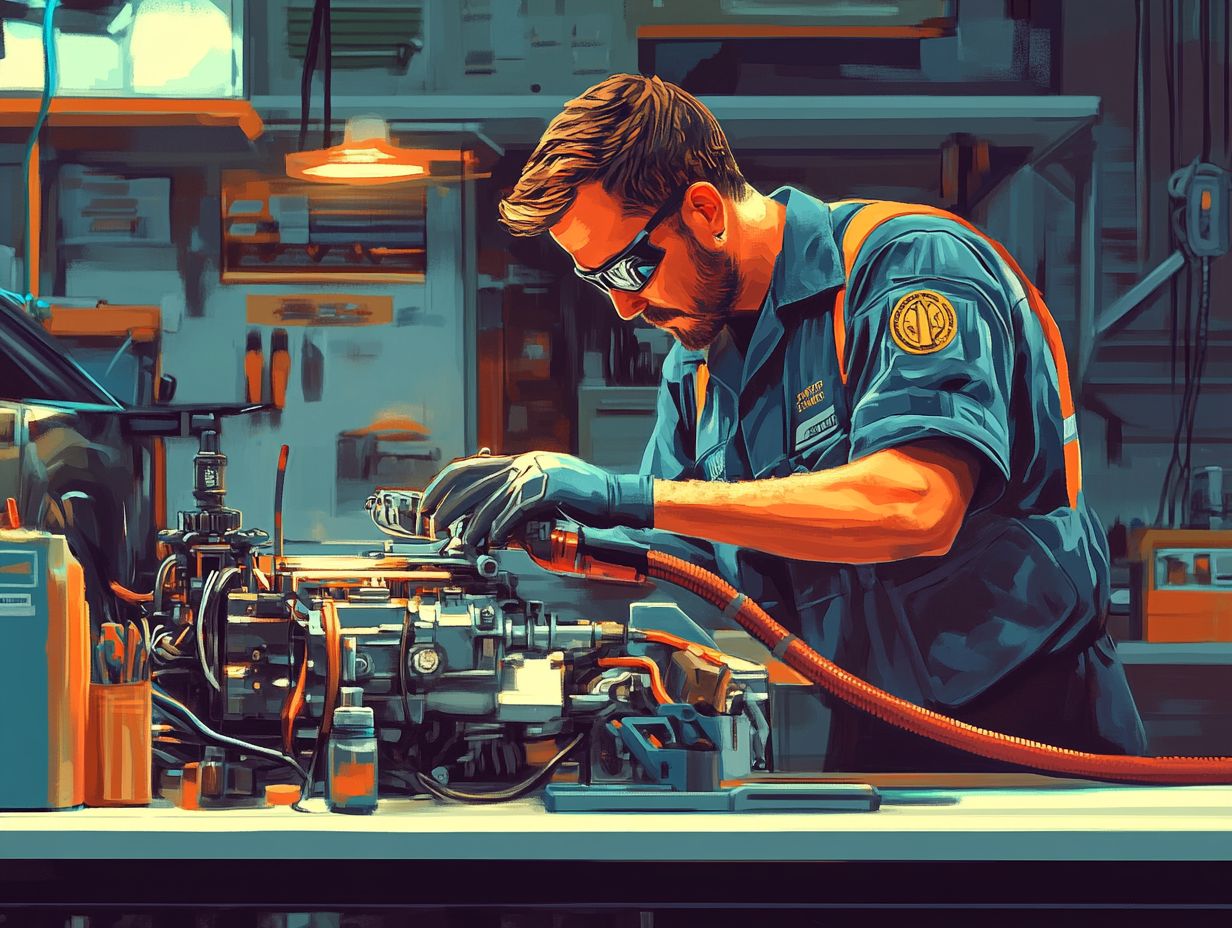
Repairing a leaky radiator is essential for preserving the integrity of your entire cooling system and preventing the dreaded engine overheating.
When a radiator leaks, it disrupts coolant circulation, significantly impacting engine performance and reliability.
By opting for a coolant flush during this repair, you not only eliminate debris but also ensure that high-quality parts are installed by professionals, effectively safeguarding against future leaks.
Step-by-Step Guide to Fixing Leaks
Fixing radiator leaks requires a step-by-step method. First, begin with a thorough visual inspection to identify the source of your coolant loss.
Next, conducting a pressure test can help uncover hidden leaks. This allows a mechanic to provide an accurate assessment and recommend the most effective repair method.
Once you’ve pinpointed the leaks, having the right tools at your disposal is essential. You’ll typically need a radiator repair kit, wrenches, and screwdrivers to tighten or replace any necessary parts.
If you re comfortable tackling DIY repairs, combining sealants and epoxy can offer a temporary fix. It’s always a good idea to get a professional assessment for more complex or critical issues.
A mechanic may propose various strategies, such as replacing the radiator, fixing individual seams, or using specialized leak-stopping compounds. This approach ensures you have a comprehensive and lasting solution to your coolant loss problem.
Replacing a Faulty Water Pump
Replacing a faulty water pump is essential for preserving the efficiency of your cooling system. A malfunctioning pump can significantly disrupt coolant circulation, leading to the risk of engine overheating.
As a discerning vehicle owner, stay alert for signs of a failing water pump, such as coolant leaks or unusual noises. Addressing these issues with professional repair promptly can prevent potentially serious engine damage.
Signs of a Failing Water Pump
Signs of a failing water pump might show up as coolant leaks, erratic temperature gauge readings, and a noticeable drop in engine performance. It s essential for you to recognize these symptoms; neglecting them can lead to serious engine problems.
Coolant leaks can manifest as puddles beneath your vehicle, often accompanied by a sweet smell. This could point to a compromised seal or damaged housing.
If you find your temperature gauge fluctuating, it indicates that coolant isn’t circulating properly, putting your engine at risk of overheating or damage.
You may also notice decreased engine performance, which could feel like a lack of power during acceleration or unusual noises emanating from the engine compartment.
To stay ahead of potential issues, regular visual inspections should include:
- Check the pump for any signs of rust or corrosion.
- Ensure hoses are secure.
- Monitor coolant levels.
If you observe any of these signs, don t wait until it s too late; seek professional assistance promptly to save yourself from costly repairs in the future.
How to Replace a Water Pump
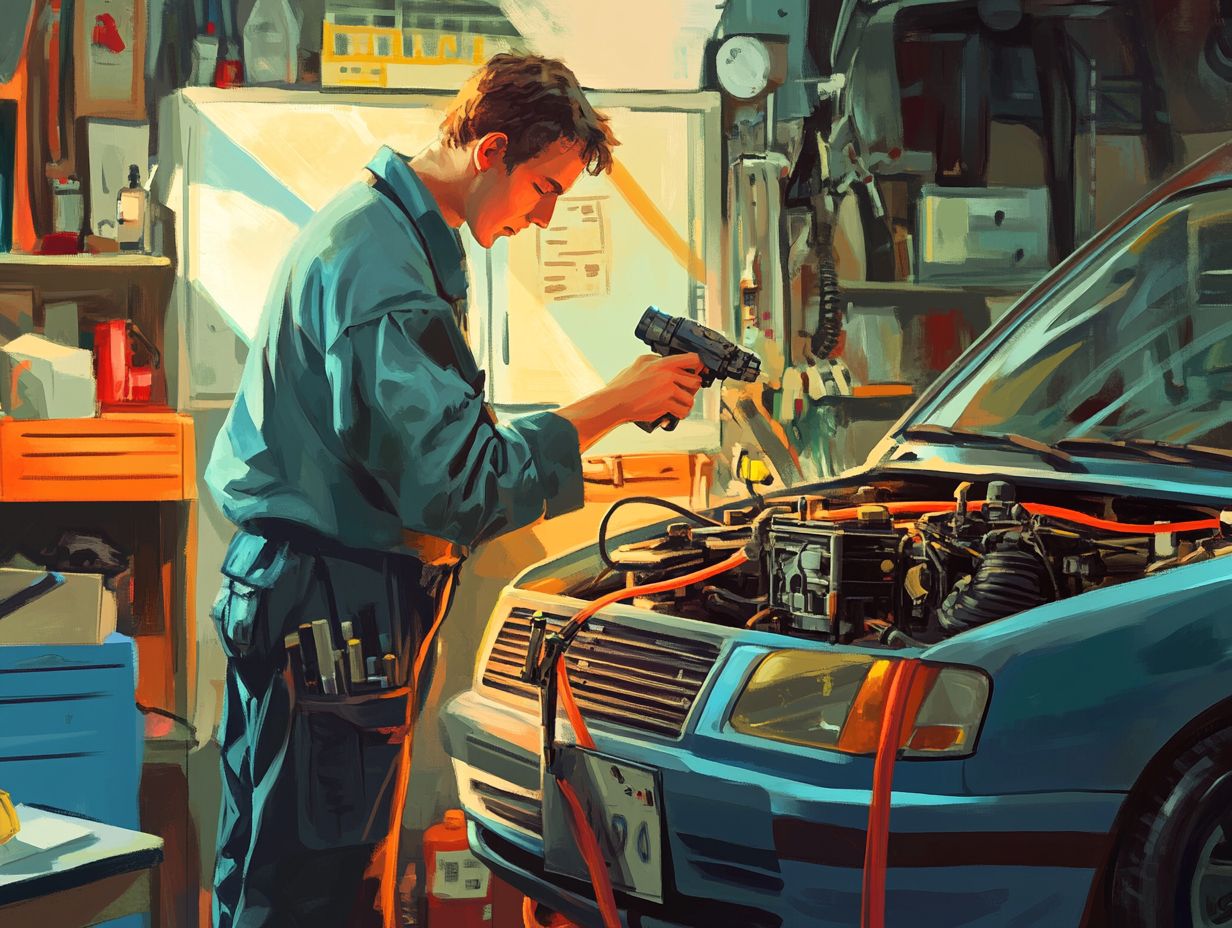
Replacing a water pump demands your full attention to detail and a solid understanding of engine operation. Improper installation can lead to a cascade of cooling system issues.
It s wise to invest in high-quality parts during the replacement process to guarantee long-lasting performance and minimize future repairs.
Before you begin, gather all the necessary tools, such as wrenches, screwdrivers, and a coolant catch pan. This preparation will save you time and frustration later on.
Don t forget to observe safety precautions. Wearing gloves and safety glasses is essential to safeguard yourself against potential hazards.
Once you ve removed the old water pump, install the new unit with precision. Ensure that all gaskets are seated correctly to prevent leaks.
After the replacement is complete, maintaining the coolant levels is crucial for optimal engine performance. Regular checks and timely changes will help you avoid overheating and extend the life of your engine.
Fixing a Broken Thermostat
Addressing a malfunctioning thermostat is crucial for maintaining optimal engine temperature regulation. A faulty thermostat can result in serious engine overheating and hinder your vehicle’s performance.
Keep an eye out for symptoms such as erratic temperature readings or an unusually high temperature gauge. These are clear indicators that professional repair and maintenance are necessary for your vehicle to operate smoothly.
To ensure your vehicle’s longevity, check it regularly and consult a mechanic if you’re unsure about any issues.
Symptoms of a Faulty Thermostat
Symptoms of a faulty thermostat often reveal themselves through unusual temperature gauge readings. These readings raise valid concerns about engine performance and coolant management.
Recognizing these symptoms early prompts a timely visit to the mechanic, effectively preventing further complications in your cooling system.
When you notice the temperature gauge consistently showing readings that are too high or too low, it typically indicates the thermostat isn t regulating coolant flow properly. Get to know these temperature changes; they can save your engine!
For example, a significant rise in temperature could signal potential overheating, putting your engine at risk of damage. Conversely, a lower-than-normal reading may suggest a thermostat stuck in the open position, which can lead to inefficient engine operation.
Regularly monitoring these gauges allows you to take swift action, like scheduling an inspection or making necessary adjustments. Ensuring your engine remains healthy helps it perform at its best.
Steps to Replace a Thermostat
Replacing a thermostat is a detailed process that demands careful attention to the engine components. It’s essential to perform a coolant flush before installation to maintain system cleanliness.
This professional repair elevates your vehicle maintenance and ensures optimal engine performance.
To get started, gather your essential tools: a screwdriver, a socket set, and a new thermostat that fits your vehicle perfectly. Don t forget a container for the old coolant and some rags for any spills.
Safety should always be your top priority. Wear gloves and goggles, and allow the engine to cool down before diving into the process.
Regular coolant flushes are crucial for preventing blockages and overheating, which supports the longevity and reliability of your engine’s function. By taking these precautions and following the necessary steps, you play a significant role in maintaining a smoother-running, more efficient vehicle.
Frequently Asked Questions
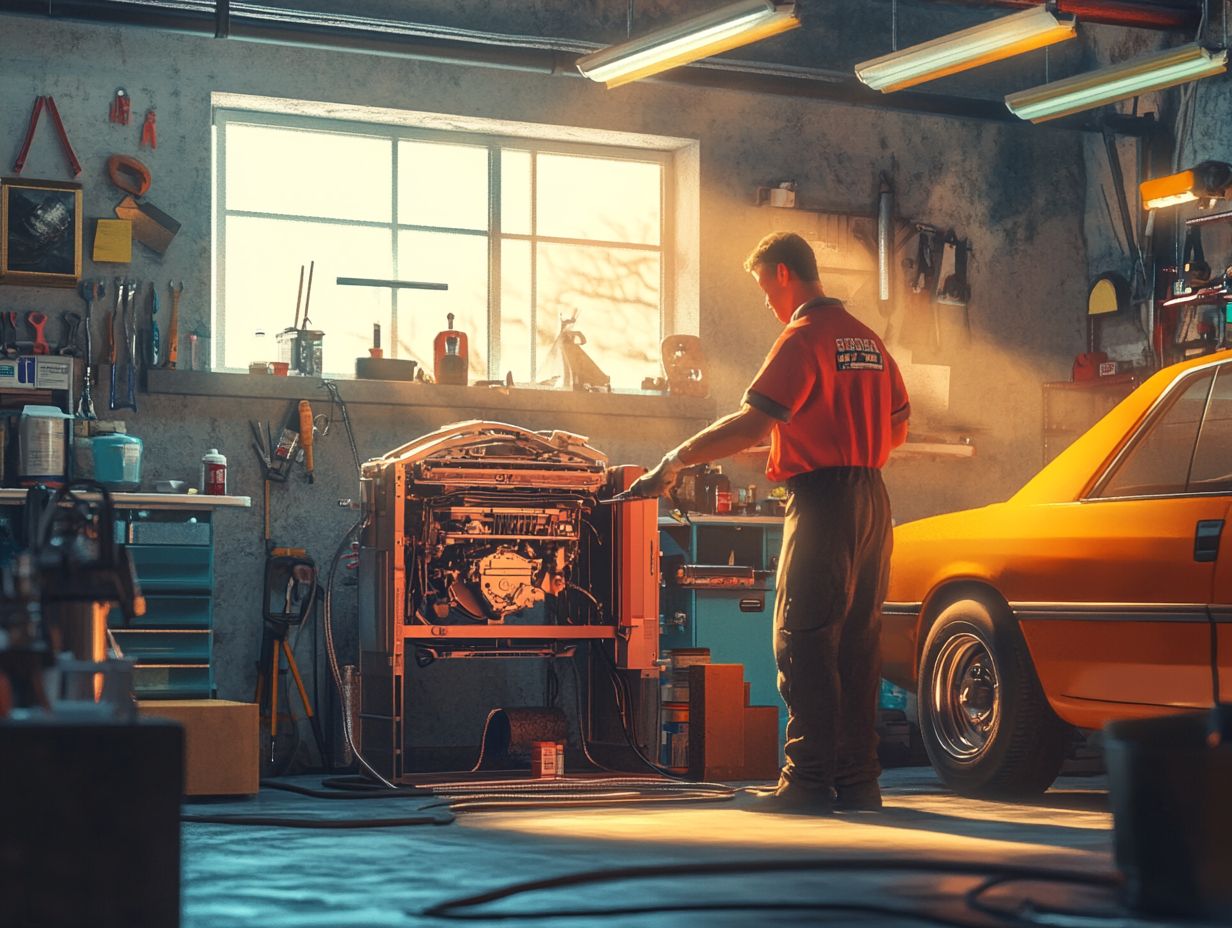
What are some common causes of cooling system problems?
Common causes of cooling system problems include leaks, clogs, a faulty thermostat, and a malfunctioning water pump.
How can I tell if my cooling system needs repairs?
Notice any of the following signs? It s likely your cooling system needs repairs: overheating engine, low coolant levels, strange noises, or a sweet smell coming from your engine.
What are some ways to prevent cooling system issues?
Regular maintenance, such as flushing and refilling the coolant, checking for leaks, and replacing worn-out parts, can help prevent cooling system problems.
Can I repair a cooling system problem myself?
It is not recommended to attempt to repair a cooling system issue yourself. It can be complicated and requires technical knowledge. Instead, consider reading about understanding the most common vehicle repairs and take your vehicle to a certified mechanic for a proper diagnosis and repairs.
How much does it typically cost to repair a cooling system problem?
The cost of repairs for a cooling system issue varies depending on the specific problem and the make and model of your vehicle. It s best to get a quote from a trusted mechanic for an accurate estimate.
What happens if I ignore a cooling system problem?
Ignoring a cooling system problem could lead to serious engine damage and potentially costly repairs. Address any issues with your cooling system as soon as they arise to avoid further damage.
Don’t wait until it’s too late. Check your cooling system today!

